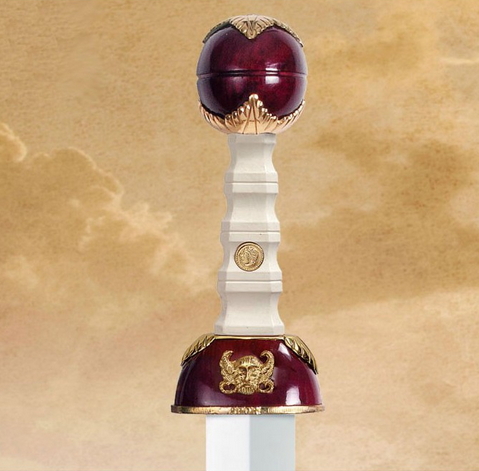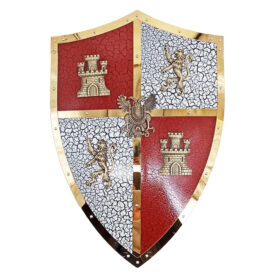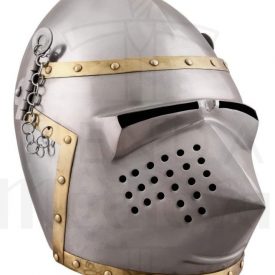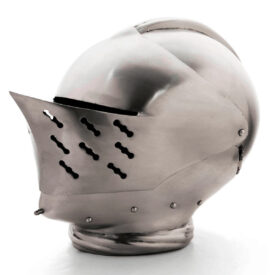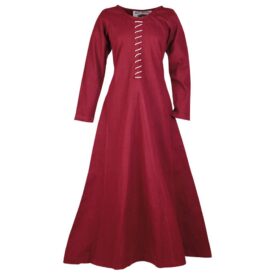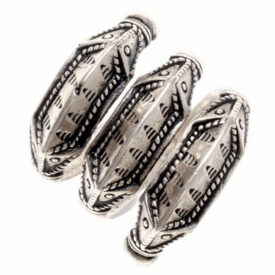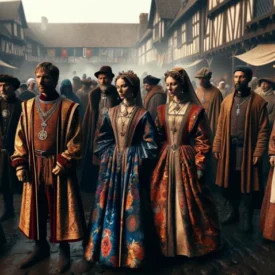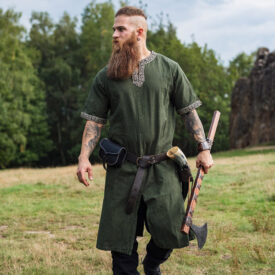Medieval Armor History
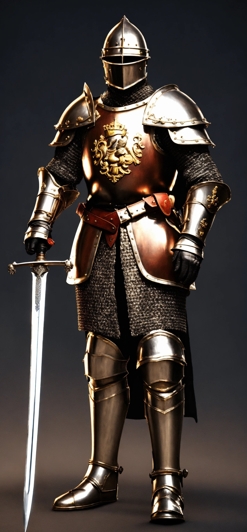
The origin of medieval armor dating from the period when the Egyptian military garb consisted of a helmet and a breastplate made of strong cloth or leather covered largely with metal plates. All armor are made available to us in Toledo (Spain) and delivered with its certificate of authenticity that proves it.

In the Middle Ages, after the invasions of the peoples of the North and even more at the time of the Crusades is widespread use of the lorica, consisting of scales (the Coracina) or by tissue tririllas, little ring or steel chains called chain mail as an addition to own armor worn by the military on a sort of padded jacket known by the names of gambax, velmez prepunte and to cushion the blows of the enemy weapons.
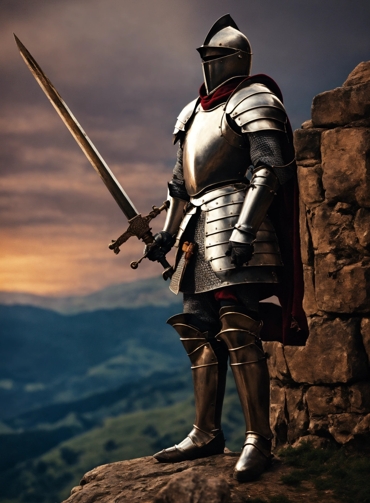
A full armor consists of several pieces hinged together having reached up to number 250 in a single fighter with a weight of about 25 to 30 kilos, but the most common medieval armor and important are reduced to twenty-five, divided into four groups of head, trunk and upper and lower extremities.
Armor .- For the head guard

| The helmet, helmet and the like protecting the top and consisting of helmet, visor and barbera |
| The helmet, was the top of the hull where there used to be the crest. |
| The visor covering the face. |
| The barber for the mouth and chin |
| The neck ruff defending ahead |
| The neck shield defending the neck from behind. |
Armor .- For the body’s defense

| The gorget or ruff in the upper chest and back, arriving to replace the gorge. |
| The breastplate , the rest of the breast |
| The pouches that came somewhat lower than the previous |
| The escarcelones, species with pouches that extended knee joints |
| The Waistguard for the loins |
| The Pancera for the belly, made of mesh |
| The asshole, to the buttocks, also made of mesh |
Armor .- The upper extremity

| Shoulder pads, shoulder |
| The Armguards in the upper arm |
| The holsters in the armpit |
| The struts in the elbow |
| The cuff on the forearm |
| The crabs on the opposite side of the elbow |
| The gauntlets on his wrists and hands |
| The gauntlets in the fingers and hand |
Armor .- The lower extremity

| The quixotic defense or leg loops for the thighs |
| Knee pads for knees |
| Leg greaves |
| The boots and shoes for foot shod |
| The plaque or card, which was added to these pieces in a fair and escudito was noticed that the top and left wearing overalls and painted the emblem and the motto of the noble knight. |
